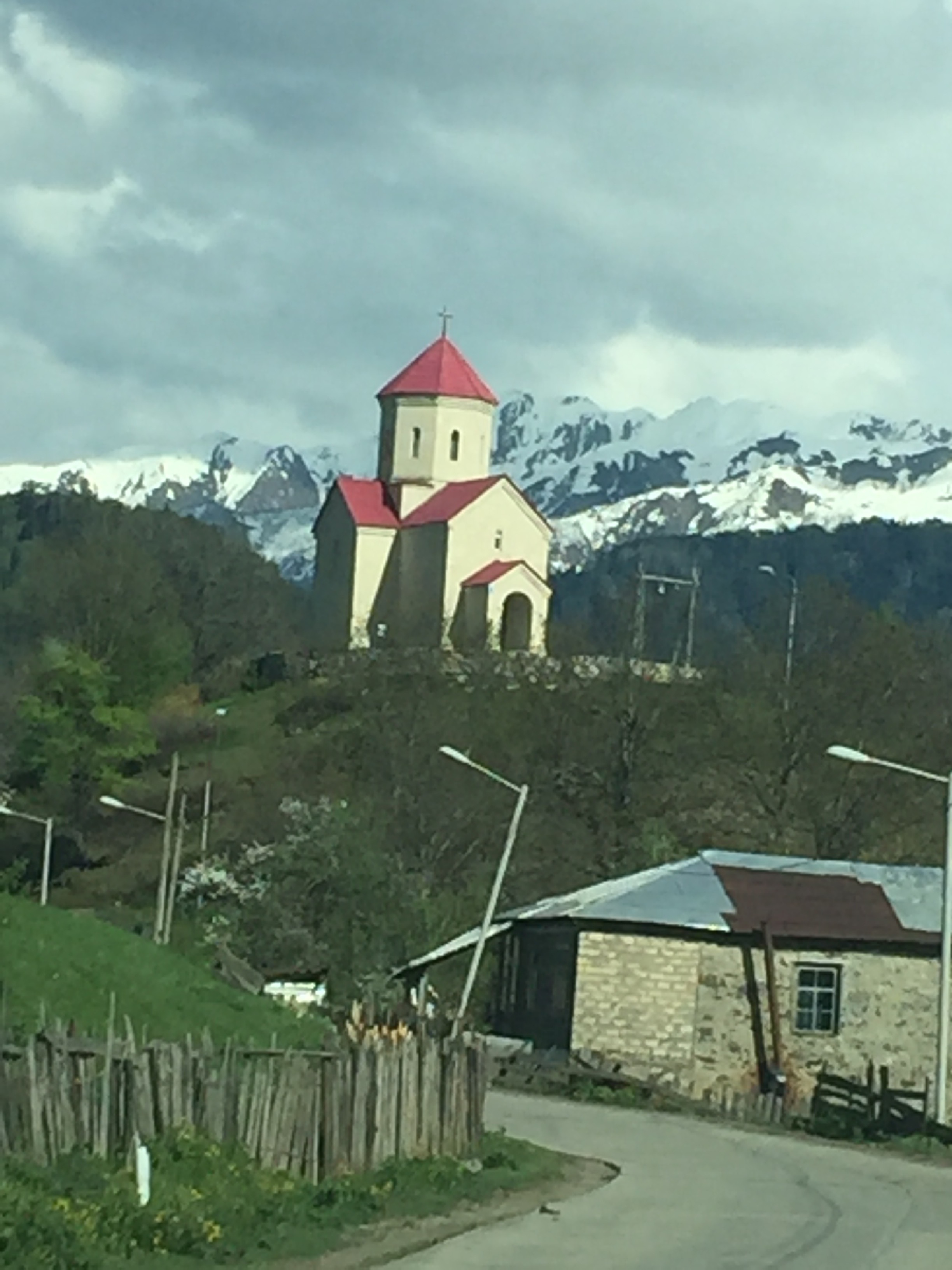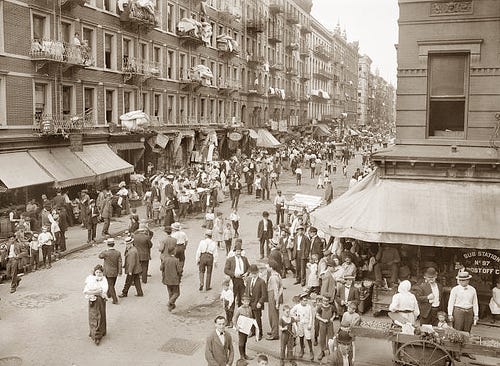My ancestors come from Teberda, a village in the Caucasus Mountains of southern Russia. Small and isolated, Teberda had existed for hundreds of years on the slopes of Mount Elbrus, the highest mountain in Eastern Europe. A hundred years ago, in that isolated village, Muslims, Russian Orthodox Christians, and Jews coexisted, along with a few other ethnic and religious minorities. In those times, religion represented not only the structure of one’s theological faith — its ethnic bonds constituted the framework around which people coalesced. But since this village was so isolated, the separations normally expected between Muslim, Jew, and Christian were not as defined. People were unified by necessity against more essential common enemies, which in their case precipitated danger everywhere — especially those incited by nature’s rains, floods, and droughts. There were also those fomented by the Cossacks, the legitimate government, and the semi-hostile countries all around them — Teberda being close to the borders with Turkey and Armenia.

In the early 1900s, as the political situation heated up in anticipation of the First World War and eventually the Russian revolution, a number of the people in the village decided to leave en masse. The plan was that sixty or seventy men, women, and children would escape over the Caucasus Mountains into Turkey, in an effort to emigrate to the West. The people who were involved in this plan were not necessarily of the same family, or the same ethnic group. Everyone who was willing to make the trip was included. With considerable preparation, they made this arduous journey, and after getting to London, about half continued on to New York.

As you can imagine, an expedition of this kind was so hazardous that the group bonded together even more closely than it had in the village of Teberda. When those who continued on from London eventually arrived in New York, all the different families from diverse ethnicities, in order to stick together, cooperatively bought an apartment house. They recreated their village vertically on Orchard Street in the Lower East Side of Manhattan, in a neighborhood populated by immigrants from numerous countries and different backgrounds.
The boundaries of intermarriage at that time, especially in the area of religion, were as strong as the boundaries of intermarriage between races were fifty years ago. One just did not marry outside of one’s religion. Even in Teberda, with its unusually cohesive population, people married between religions less frequently. Eventually, American culture worked its magic, and life in the Teberda building on Orchard Street was not immune; some of those boundaries broke down. There were intermarriages between Muslims, Jews, Russian Orthodox Christians, and the other ethnic minorities.
Opportunities were very different in New York than they were in the old country, where life was much more regulated and limited. Here, opportunities frequently proceeded according to one’s capacity. So since my family had a relatively intellectual bent, my father became an attorney, his sister a doctor, and his brother a mechanical engineer. Eventually a socioeconomic separation did take place in this community apartment house, and my family moved uptown to what is now known as the South Bronx.

They didn’t move uptown in a mother-father-kids arrangement. Fifteen years before I was born, ten Teberdans moved uptown together and rented the whole top floor of an apartment house in the Bronx. They opened up the walls and created one huge apartment, with three separate kitchens and six bathrooms (I actually slept in a converted kitchen). A few rooms were broken through to make a living room that could hold all those residing there, plus a copious flow of immigrant visitors from all the different ethnicities represented in my family.
There was always a stream of immigrants going through the house. My grandparents helped people find places to live, so our apartment became somewhat of a staging point between Ellis Island, where immigrants were placed when they first landed, and some apartment where they would eventually settle. As a child, I remember families, mostly Russian but some also from Turkey and Armenia, who would stay with us until they got a place of their own.
Yes, we now live in very different times, but are we not still part of a larger entity — the human race? Our differences have the potential to make us stronger and richer. Our similarities can be the bridge across which we can walk to meet each other.This American melting pot of ours has survived and prospered because of its diversity. My family history is an example of this; it is a success story evidencing the lack of inherent polarization between members of different religious and ethnic groups. Surely we can work together to resolve our points of contention and come to an agreement that serves both security and inclusiveness.


